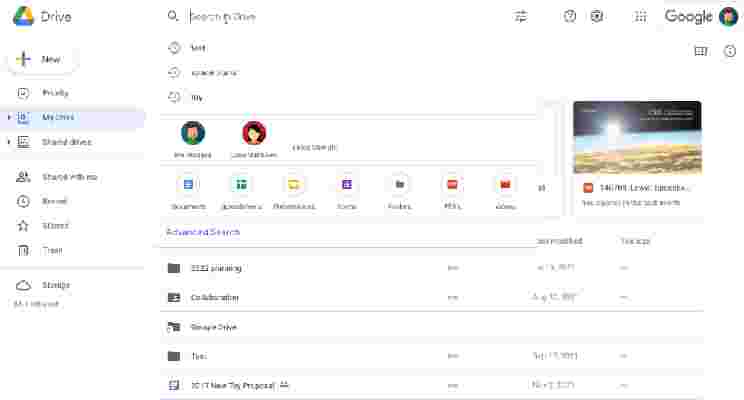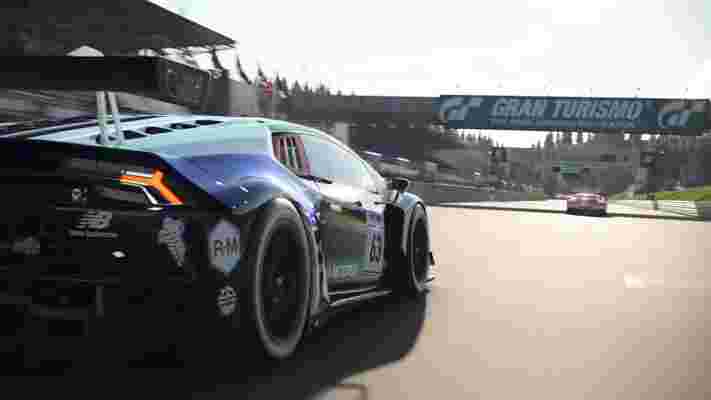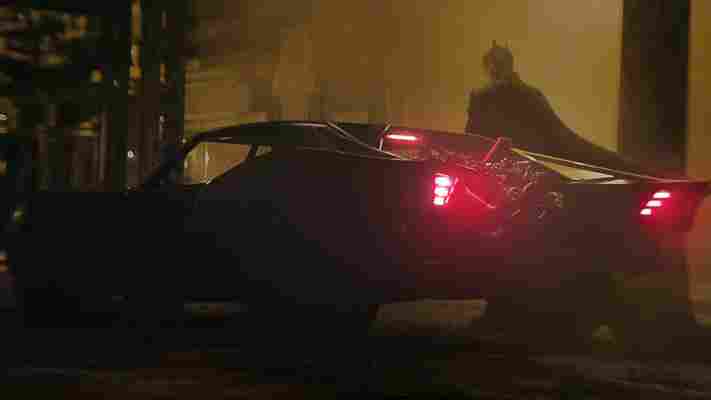Google is rolling out an update for cloud storage service Drive that should help people locate specific files more easily.
As explained in a new blog post , Google is introducing a new “search chips” feature to Drive, which lets users filter search results using various different parameters, including file type, labels and last modified date.
Google Drive will also make it possible to filter based on “To do” status, which narrows down the pool of results to include only files that have outstanding actions associated with them.
File management in Google Drive
Since the transition to remote working , a larger proportion of collaboration has taken place online, over platforms such as Google Workspace . Inevitably, this also means that people are juggling a larger number of files, from documents and spreadsheets to images and videos.
The ever-expanding number of files hosted in each worker’s domain, many of which are likely to use a similar naming convention, makes managing and locating specific documents all the more difficult, a problem the latest Google Drive update attempts to remedy.

“When searching in Drive, users often use a few key words to try and locate the file they’re looking for, such as ‘marketing plan’ or ‘sales report’, which may return results that are too broad,” Google explained.
“[Search chips] make it easier to find relevant files faster and eliminates the need to perform multiple searches to sort through irrelevant results.”
In addition to the introduction of search chips, Google has also made a number of further tweaks and improvements. For example, Google Drive will now offer spelling suggestions in the search field and automatically assign labels to content to help with effective categorization.
The search chips feature has been available in beta since November last year, but is now in the process of rolling out to all Google Workspace users, who will gain access within the next two weeks.
Gran Turismo 7’s music mode might finally convince me to play a racing game
Gran Turismo 7 looks like a car fanatic’s dream. It’s a love letter to the growling engines, sleek chassis, and rugged tread of automobiles. Every inch of car and every meter of track will be meticulously recreated in the name of immersive simulation. You might not own a Porsche Taycan , but you can discover what it feels like on the road by hopping in the virtual driving seat and taking it for a spin.
That’s my impression, at least. I’m no racing game savant and certainly no car fanatic. While I have fond memories of tearing up streets in Need for Speed: Underground 2 and exploding motorcycles and monster trucks in Motorstorm back in the heyday of the PS3, I’ve steered clear of most racing releases. The sillier titles of the genre might grab my attention, but serious racing sims usually get a pass from me.
The promise of driving exorbitantly expensive cars around a virtual race track, or gradually learning the intricate handling techniques of a McLaren, don’t whet my appetite. I need something other than the car, beautiful environments, or the thrill of the race to draw me in. I want some novelty to grab the brunt of my attention, leaving the actual game to sit quietly in the passenger seat.
A fitting distraction

It’s a big ask, and one that few developers would, quite rightly, bother catering towards. But GT7 might fit the bill. Revealed during Sony’s recent State of Play event, the game will sport a new Music Rally mode that seems specifically tailored for people like me - those who aren’t content to race around a track unless there’s another seemingly irrelevant, but actually more interesting, feature to occupy their impatient mind.
Music Rally looks to be a sort of musical time trial. You’ll race around a track against a timer while a banging tune plays in the background. Let the timer tick to zero before you reach the next checkpoint, and it’ll be race over, so you’ll need to pass through specific gates to replenish your time and keep in the race. So far, so standard. What shakes things up, however, is the connection between the countdown timer and the music. Time ticks down at the same rate as the song’s tempo, so you don’t have seconds to count but the BPM (beats per minute) of whatever song you’re racing to.
The idea is that you not only drive alongside the music but race against it, trying to match your speed on the asphalt with the song that’s blasting in your ears. Faster songs will be more challenging, as the timer ticks down at a higher rate, while slower songs are more forgiving, as their slow tempo gives you longer to reach the next checkpoint. Style and genre will determine the countdown timer’s starting position and track length comes into play, too; you’re not racing to get over the finish line but trying to stay in the race by the time the song ends.
From what Polyphony Digital has shown so far, Music Rally sounds like it will supplement GT7 without interfering with its core gameplay loop. It lets you crack on with a competitive race as usual, but gives you something extra to focus on. The specific hum of your car’s engine or the particulars of its handling will no longer be the only novelty to enjoy during a race. Instead, non-car-aficionados can appreciate some sweet grooves and sick riffs as they drift around corners at breakneck speeds.
Musical fusion
What really makes the mode special, is its integration. Although it’s easy enough to stick on a Spotify playlist when playing Gran Turismo, that leaves the music disconnected from the game; nothing more than background sound that’s completely separated from what you're doing on-screen. GT7’s Music Rally mode bridges that gap, and while it might not meet the wild levels of interaction of Audiosurf and other music rhythm games, it certainly goes a step further than mere musical accompaniment.
Without the mode’s competitive time trial component, I’d be worried the whole thing would feel pointless. As much as I enjoy listening to tunes while driving, I need an objective to focus on when playing racing games; something to direct my attention back to the screen. What better way for GT7 to do that than by connecting the music going into my ears with the movement going on with my thumbs.
There are a few questions Polyphony has left hanging in the air. It’s not yet clear whether every one of GT7’s over 300 songs can be used in the new mode, or whether you’ll be able to import your own music to use. That last one is probably too large an ask, so don’t be expecting to upload a math rock piece or some prog epic just to see how the tempo changes play out mid-race.
Will Music Rally convince me to buy GT7? Well, not at launch, certainly. But I imagine a couple of years down the line when I’m craving beautifully ray-traced cars and want to give my ears a treat, it’ll be top of the pile. Even though I might not be part of GT7’s primary target audience, Polyphony has made me excited for a genre I forgot years ago. That’s no mean feat.
The Batman was never meant to be R-rated, director says
The Batman was always intended to be a PG-13-rated movie, Matt Reeves has revealed.
Speaking to Den of Geek ahead of The Batman 's release, Reeves explained that the Dark Knight's latest big-screen outing was never going to be a violent, mature offering. Instead, he said, it was intended that the DCEU flick would push the boundaries of what's possible for a PG-13 film in the US (that's a 12A rating in the UK) without overstepping the mark.
“In my mind, the movie was always going to be a gritty, edgy, noir, thrilling spectacle that was PG-13,” Reeves said. “That was always what it was, but I always knew that we’d be pushing the limits of what that could be, and so we didn’t really have to cut anything. The promotional materials that you’re seeing, they’re fully reflective of the tone of the movie.”
Reeves' comments come a month after The Batman's age rating was revealed.
In mid-January, Warner Bros. confirmed that the Caped Crusader's latest cinematic adventure would be a PG-13 offering. That rating means some scenes may be unsuitable for people under the age of 13, and that it may contain strong language, extensive violence, scenes of a sexual nature, and/or drug use.
Despite the fact that The Batman won't be a gratuitous take on the legendary superhero, we don't think the film's PG-13 rating will prevent it from being as dark as previous live-action incarnations. After all, judging by the footage we've seen so far, Robert Pattinson's Batman isn't going to go easy on any criminal, regardless of their reputation.
The Batman launches exclusively in theaters on March 4.
Analysis: don't expect an R-rated Reeves Cut of The Batman

While some fans may have been disappointed to learn of The Batman's official age rating, there are some who are still praying for an R-rated cut.
Don't hold your breath on that front, though. In the same Den of Geek interview, Reeves categorically stated that there isn't an alternate, more violent version of his movie – the Reeves Cut, if you will – that Warner Bros. have secretly locked away.
“There isn’t some special cut of this movie where it’s like, ‘Oh yeah, here’s the R rating that you’ve been desperately wanting',” Reeves added. “I didn’t have to suddenly start drastically cutting the movie or anything like that.”
So The Batman's theatrical cut is the only version of the movie that exists. Given Reeves' denial that an R-rated cut exists, and that he always intended for The Batman to be a PG-13 superhero flick , there shouldn't be any fan-led campaigns calling for the Reeves Cut to be released.
The Batman, then, won't follow in the footsteps of the Snyder Cut – aka Zack Snyder's Justice League – which finally saw the light of day in March 2021. The director's original, four-hour cut of the movie landed on HBO Max after a lengthy campaign by fans who weren't happy with Joss Whedon's reworked theatrical version of the film persuaded Warner Bros. to let Snyder complete his vision for his final DCEU movie.
Despite fan power winning the day on that occasion, a similar campaign for Warner Bros. to release the David Ayer's original vision for his critically panned Suicide Squad movie was unsuccessful. Speaking after The Snyder Cut's release, WarnerMedia CEO Ann Sarnoff confirmed that The Ayer Cut would never see the light of day . Ayer has since washed his hands of the Suicide Squad's theatrical cut that was released in August 2016.
Based on Sarnoff's comments concerning The Ayer Cut, if a director's cut of The Batman did exist, it's unlikely that it would ever be released. It's a good job, then, that one doesn't.